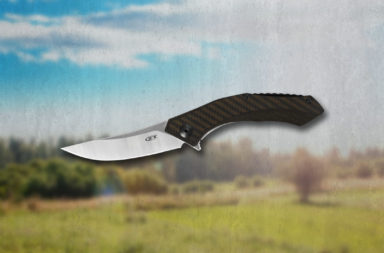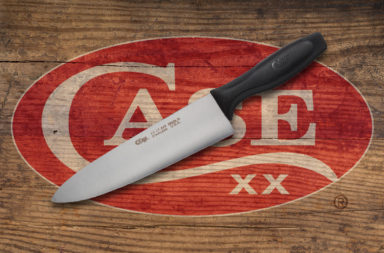Want to keep your knife in good working order? Keep it sharp. Here’s some basic information about sharpening that will help you keep a nice clean, sharp edge on your knives.
How do I know if my knife needs sharpening?
You can inspect your knife’s sharpness in a few different ways. Visually inspect the blade. A truly sharp knife has an edge that is too small to see with the naked eye. A duller knife will have imperfections that are visible with the naked eye. Because it’s hard to tell just by looking, some people use touch to check the sharpness of a blade. You can run your thumb across the blade, perpendicular to the edge and feel how fine the edge is. If you don’t want to get cut, never run your finger tip parallel to the blade edge. A sharp blade will slice right into your skin. Most people, however, know a knife needs sharpening when it just isn’t cutting as well as it should. It grabs as it is drawn an object and doesn’t bite into the object without putting pressure on the blade.
Knife sharpening is a three-stage process. It’s referred to by the effect of your action or by the tools you use in those three stages. Here’s how it works:
Stage 1
Grinding/Whetting sharpens the blade by removing metal to form a new edge. This process is often referred to as sharpening.
Stage 2
Steeling (using a honing steel) straightens the new edge you’ve created in stage 1. This process is called straightening.
Stage 3
Stropping/Polishing (with a strop, polishing cloth, or buffer) gives the blade a mirror finish that makes your knife look great, but it doesn’t significantly change the edge or blade. This is most often referred to as polishing.
There are many different ways to get through this three stage process. Let’s look at each of those a little more in detail.
Arkansas Whetstones
The softer the stone, the coarser the surface of the stone feels. A soft whetstone is commonly used among commercial knife sharpeners, and a hard whetstone is used for fine polishing and maintenance. Note that color does NOT determine the grade of the stone, so you need to pay attention to the grit notation on the whetstones you use. To get a nice edge, you need to work from a coarse whetstone down to a fine whetstone. Whetstones require the use of a honing oil.
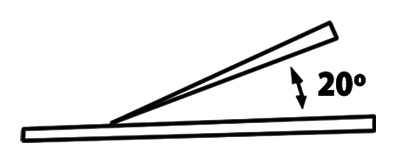
To sharpen with a whetstone, you’ll need to follow the manufacturer’s instructions, but the real key is holding the knife edge at a consistent 20-degree angle to the stone and making long, slow, consistent strokes. Also, you’re going to “fine” sharpen far more often than you “coarse” sharpen to keep your blade nice and sharp.
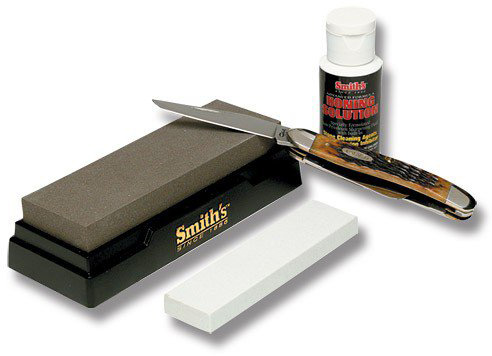
Smith’s two-tone sharpening kit
Lansky Sharpeners
Lansky sharpeners are like whetstones, but Lansky uses a clamp device that maintains a consistent angle that helps give you a perfect edge. Lansky provides great directions on how to properly use their sharpeners.

Lansky Deluxe Sharpening Kit
Diamond Sharpeners
These are available in slab or rod form. The surface of a diamond sharpener is covered with embedded diamond particles. Like whetstones, they are offered in different grits from coarse to fine. You’ll use a diamond slab almost exactly like a whetstone, and diamond rods will come with instructions on best use.
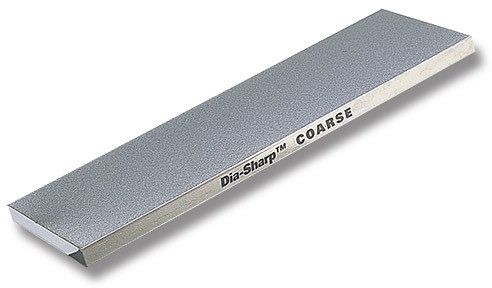
DMT Dia-Sharp Coarse Diamond Sharpener
Ceramic Sharpeners
Unlike whetstones, ceramic sharpeners do not require any lubrication, and they can be found in many different configurations, from a simple rod to small pocket or key chain-sized gadgets. Many of the ceramic sharpeners use a ‘V’ formation to help keep the proper edge angle while sharpening. Follow the manufacturer’s instructions for best results.
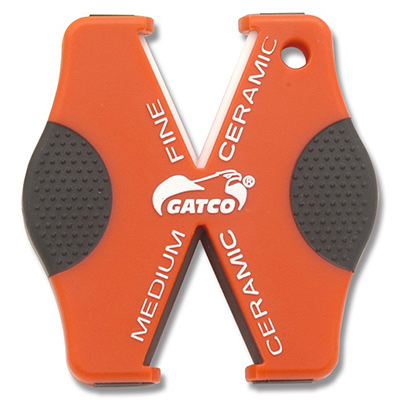
Gatco Super Micro Sharpener
Steeling
I’m sure you’ve all seen a chef “sharpening” his knives, but what he’s really doing is steeling. A sharpening steel is a cylindrical rod that basically realigns the fine edge of a knife. While this process is repeated many times in the kitchen, it’s not used as often on other non-kitchen knives.

17″ Sharpening Steel
Polishing/Buffing
If you want your blade to “look” great after sharpening, you can polish it with a strop or some blade polish and a polishing cloth. Knife manufacturers get that really bright shine by using a mechanical buffer. A good polish or buffing simply makes sure the blade is clean and free of damaging debris.
To find everything you need to get started in the sharpening process, click the button below.

